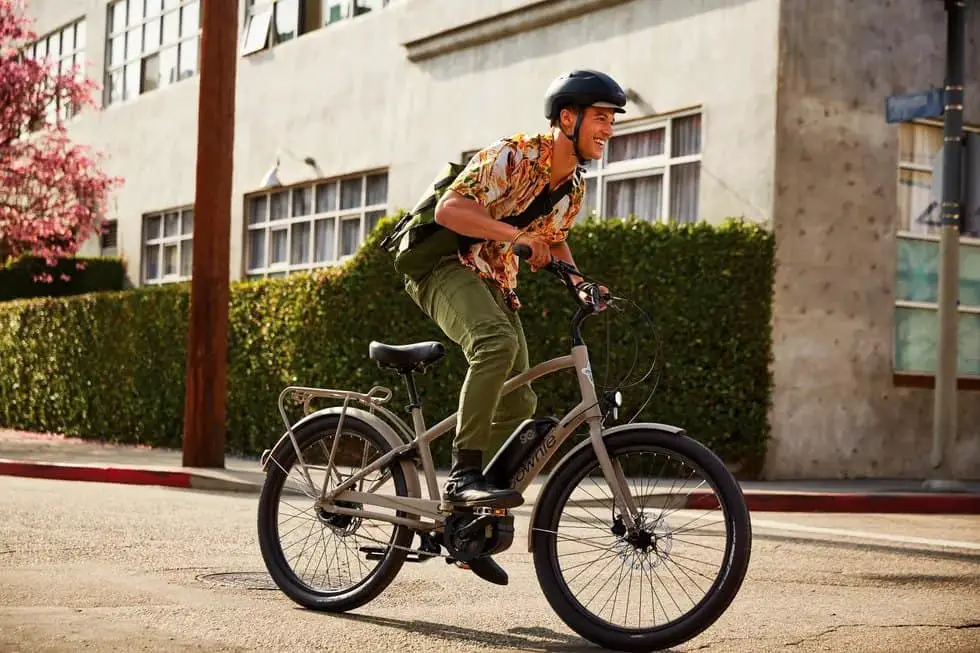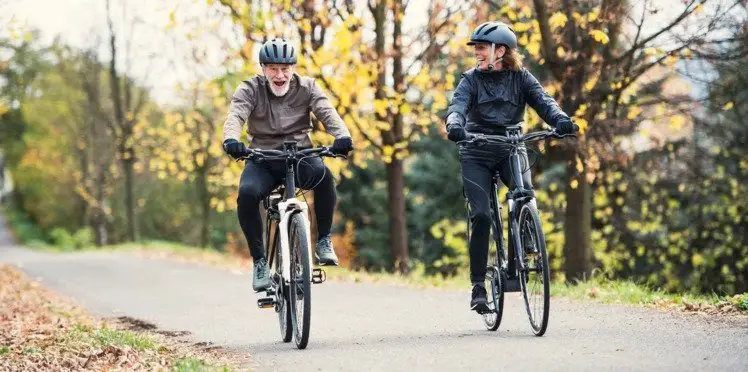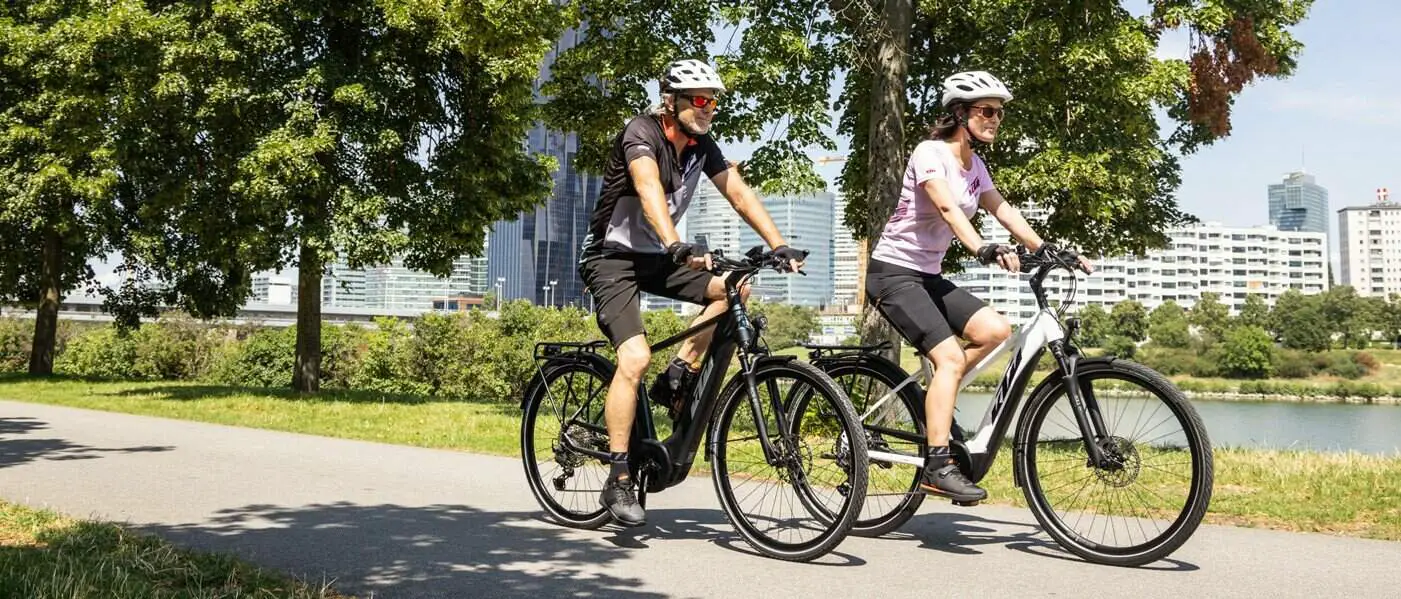Last Updated on June 2, 2022 by Igor Karni

If you are a person dealing with heart issues, including but not limited to stroke, angina, heart attack or high blood pressure, then understandably you would be concerned about doing physical activity. This concern is a legitimate one, as it stems from the possibility of overdoing it and potentially risking further cardiac damage or exacerbating an existing condition.
However, exercise is imperative to maintaining a healthy lifestyle, and this applies equally – if not more – to those dealing with physical conditions. While it’s important to listen to your body and know when to take it easy, it’s just as important to be as active as you can.
Read also: Are electric bikes cheating (backed by research)? And, Are electric bikes good for fitness?
Keeping up with regular physical activity is not only a preventive measure, but for people with existing physical conditions it also strengthens your muscles and bones, controls your weight, helps your arteries and veins stay clear, controls your blood pressure, and much more.
So, how do you maintain a regular exercise regime without overdoing it, and is riding an e-bike a viable option if you’re dealing with cardiac issues?
This article will outline the various factors one must consider before riding an e-Bike while dealing with heart-related illness.
Work your way up slowly
Like when dealing with any physical ailment, moderation is key. E-bikes are becoming a more and more popular form of exercise that is prescribed to people with all kinds of physical conditions, and heart disease is one of them.
Since e-Bikes give riders the option of pedal assist, which in turn requires less pedaling effort than a traditional bicycle, e-bike riding is a great, customizable and low impact form of aerobic exercise (a low-impact exercise is a form of exercise that doesn’t put unnecessary strain on your joints or body).
Common advice given to heart patients is to build up your exercise tolerance slowly. This is especially key if you have recently experienced a heart attack or heart surgery. This means that you should be riding your e-Bike at the lowest intensity when you start, and gradually build up to a higher intensity that feels right for your body.
Don’t push or overexert yourself. Heart patients are typically advised by their doctors to keep their heart rate low, even while exercising, in order to lower the risk of further damage. Luckily, e-Bikes are known for being an accessible option to those who may otherwise be restricted or at risk of doing other forms of exercise.
Read also: Does riding an e-bike help train strength and endurance? And, Are electric bikes good for cardio exercise?

To ensure that you’re keeping your heart rate low, using a heart rate monitor is extremely handy (Amazon link). This gives you tangible, real-time evidence of how your heart is doing, and many heart attack survivors use this when riding their e-Bike to ensure that everything is going smoothly. When riding an e-Bike, try and ride on as even or flat terrain as possible to avoid overworking your heart.
Some useful tips to abide by when riding your e-Bike, as advised by the Heart Foundation (link to the website), are these:
- Take a break if you’re not feeling well or are tired;
- Drink plenty of fluids before, throughout, and after your exercise;
- Don’t ride immediately after eating a meal.
One option to consider, which will help you if you start to feel tired while riding, is to invest in a throttle (as opposed to pedal-assist) e-bike. With throttle e-bikes, you have the option to ride without pedaling, which is a feature you can rely on if you’re feeling tired, if your heart rate is getting too high, or if you’re riding through rough or uneven terrain.
Of course, the thing to keep in mind when riding throttle e-Bikes is that you’re not getting much exercise if you simply rely on the throttle the entire time, so try to use it only when you really need to. If you tend to ride in secluded or underpopulated areas, be sure to keep a mobile device on you in case of an emergency.
The idiom of “pushing yourself beyond your limits” should not apply when you’re dealing with something as serious as your heart condition. Doing intense endurance training for heart patients is typically not advised (unless your doctor or rehabilitation specialist tells you otherwise) because it can potentially lead to scarring, hypertrophy, and dilation.
Easy Tip: Talk to your healthcare professional before you begin riding an e-bike, work your way up slowly, and stay relatively within your comfort zone.
Riding an electric bicycle can help reverse heart damage
You may be surprised to hear this, but research has observed that heart damage can, in fact, be reversed – or at least be improved – by a regular exercise regime. Typically, it is advised for patients to do this before the age of 65, as there is less chance of heart plasticity after that age.
However, there are still many cases of heart patients in their 70s and 80s who have ridden their e-bikes even after having heart attacks, bypass surgeries, and transplants. There are even patients with pacemakers who now avidly ride their e-Bikes without issue and have in fact noted that their e-Bikes have brought their sense of freedom and mobility back into their lives.
In the most encouraging of cases, there are even heart patients who have built up their heart’s strength enough to reverse some of the damage, the result of which has saved their lives.
Studies have also shown that e-bike riding at a moderate intensity level is considered to be a common and viable go-to sport in patients, particularly elderly ones, who are recovering from heart disease and related surgeries.
Needless to say, many e-bike riders who are also heart patients suggest that e-bike riding should be prescribed to anyone dealing with limited mobility or other physical issues.

Other e-bike benefits to your heart health
Though you may be dealing with serious heart issues, you want to make sure you’re not being completely immobile: living a sedentary lifestyle can lead to potential other ailments or can even worsen your heart condition.
To help avoid a sedentary lifestyle, many heart patients utilize e-Bikes as part of their cardiac rehabilitation programs.
Cardiac rehab programs are a great way to get back into the game if you’re dealing with or have undergone a major cardiac issue. Cardiac rehab encourages and allows patients to build up their physical activity tolerance, which is especially imperative as this process ensures that any scar tissue is not exacerbated.
Read also: Are electric bikes good for cardio exercise? And, Here is why riding an e-bike is probably the best exercise for asthma.
Typically, patients in these rehabilitation programs will be advised to use a stationary bicycle first, in order to build up endurance and to become used to the aerobic nature of cycling, before using an e-bike. Cardiac rehab programs are a wonderful option for heart patients, as they can significantly help to reduce further injury and death in people with cardiac issues.
E-bikes, as opposed to traditional bicycles, require less cardiac exertion and therefore produce less strain on the heart. Not only is it a great form of commuting, but if you are a heart patient who otherwise relies on walking for exercise, e-bike riding is a much quicker way to get around, especially if you are feeling limited when it comes to walking.
A few words in conclusion
Riding your e-bike, and the action of cycling keeps your lungs and circulation healthy, which can help prevent further risk of cardiovascular disease. This is because cycling, which is a sport that has prominent cardiac benefits, strengthens the muscles of your heart, reduces blood fat levels, and lowers your resting heart rate.
You don’t have to ride for long to make a difference: it only requires 2-4 hours a week to overall improve your health. E-bike riding is a wonderful way to strengthen your muscles and increase your stamina and aerobic fitness.
Read also: How to use gears on an electric bike (mechanic and electric)? And, How to switch electric assistance levels on an e-bike?
Your heart, lungs and blood vessels all benefit, e-Bikes are easy to use, and you can adjust the intensity by increasing or decreasing the pedal-assist.
Exercising and releasing endorphins will also help decrease stress levels (and we all know that stress is terrible for your heart, so this is especially important).
Exercise, when done lightly, can ultimately aid in your heart’s recovery process. Riding an e-Bike has been known for helping heart patients manage their disease, and a regular exercise of riding an e-bike can even help improve your heart’s condition. So long as you exercise the necessary caution and don’t overdo it, you should be good to go!
Read also: Guidance for riding an electric bicycle with certain health conditions. And, Most common e-bike riding pains, how to prevent and cure.
Igor is a sustainable mobility and green energy advocate. His mission for Easy E-biking is to help make electric cycling simple, practical, and fun. Follow him on Facebook and LinkedIn.




